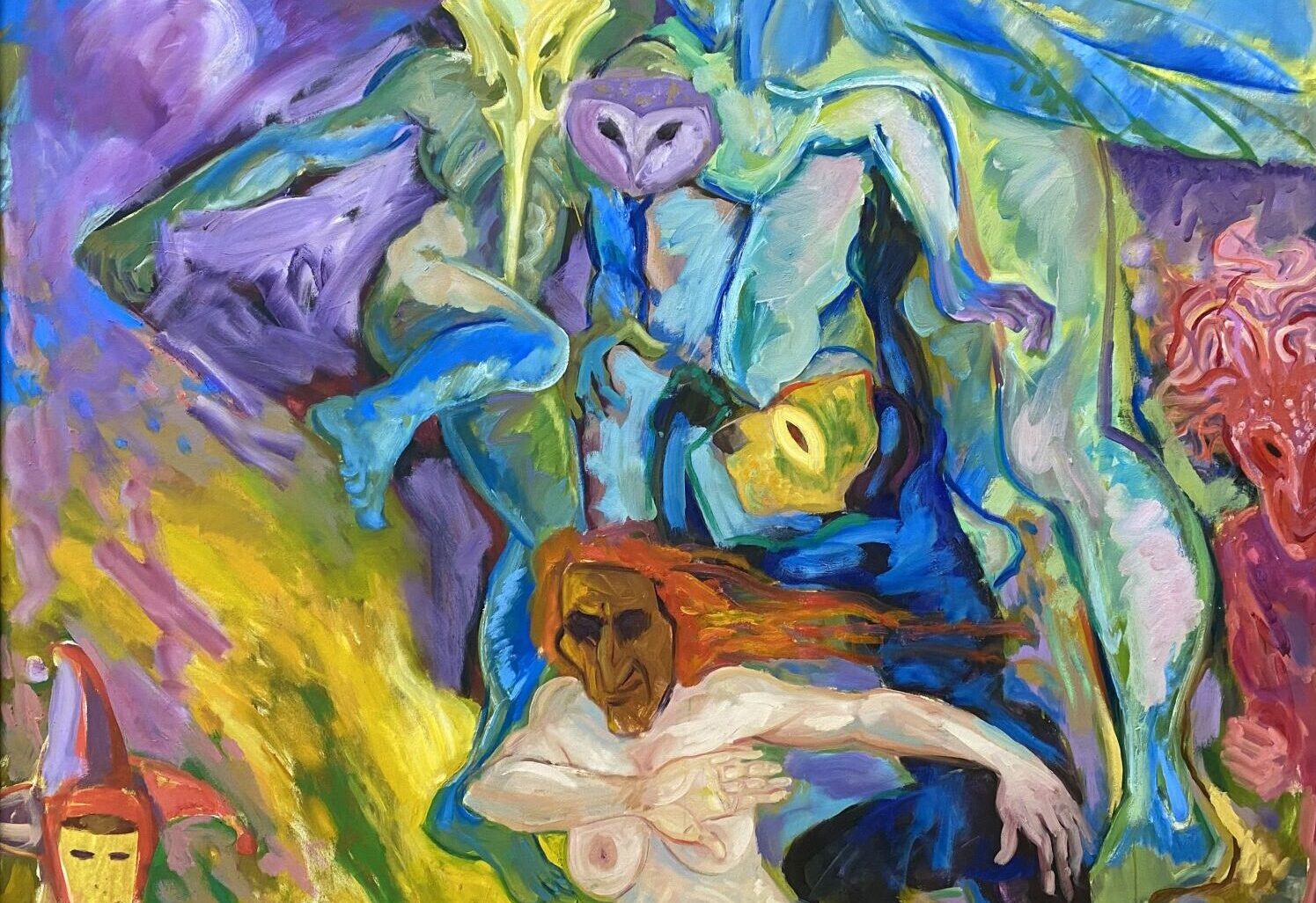The Guardian
Paint like The Swallow Sings Calypso


“A people’s art is the genesis of their freedom,” was the slogan used on the programme for the Caribbean carnival at St Pancras town hall in 1959, organised by Claudia Jones and often cited as a forerunner of today’s vast Notting Hill carnival.
With those words in mind, it is fitting that three of the most significant British-Caribbean artists – Paul Dash, Errol Lloyd and John Lyons – have each found it necessary in their practice to depict the historical and cultural significance of carnival. In a forthcoming exhibition, Paint Like the Swallow Sings Calypso at Kettle’s Yard in Cambridge, each artist’s work evokes different memories, historical events and colour palettes that work together to summon the spirit of carnival. Alongside a selection of their own etchings, drawings and paintings, Dash, Lloyd and Lyons have picked works from Kettle’s Yard and the Fitzwilliam Museum by artists including David Bomberg, Barbara Hepworth, Goya and Picasso.
While some works speak to the bright and colourful aspects of the jubilant event, others explore emancipation and liberation, which are at the heart of carnival’s founding. The Mas tradition dates back to 18th-century Trinidad and Tobago, where enslaved Africans were denied access to the Fat Tuesday (Mardi Gras) masquerade balls held by the French. They instead established their own tradition of costumes, masks, drumming, singing, dancing and chanting. The exhibition’s title is inspired by calypso musician the Mighty Swallow, whose songs protested against the inequalities inflicted on enslaved Africans and Indigenous populations under colonial rule in the Caribbean.
For the three artists, carnival and the Caribbean have long been central components in their works. Dash emigrated to Oxford from Barbados in 1957 at the age of 11, and his abstract figurative works embody the vibrant atmosphere of carnival while also exploring its roots in resistance. Lyons was born in Trinidad in 1933, and his bold expressionist and surrealist paintings help to preserve the figures and characters in Caribbean folklore and mythology. Lloyd, who was born in 1943 in Jamaica, brightly captures live scenes of troupes and portraits of people attending Notting Hill carnival.
Another important element of the exhibition is the connections between Caribbean aesthetics and European art history. For Habda Rashid, a senior curator at Kettle’s Yard and the Fitzwilliam, the exhibition offers a chance to rethink and reimagine a link between the three artists’ work and the western canon. “I like the relationship between Graham Sutherland’s The Deposition [depicting Christ’s descent from the Cross] with Lyons’s Eloi! Eloi! and David Bomberg’s The Virgin of Peace in Procession Through the Streets of Ronda, Holy Week. Those three works speak to the religious nature of carnival.”
In recent years, we have seen more interest in historicising the work of Caribbean artists, most notably in Life Between Islands: Caribbean-British Art 1950s–Now, which opened at Tate Britain in 2021. It catalogued the breadth of Caribbean-British art over four generations. The work of Lyons and Dash featured in the exhibition, so Paint Like the Swallow Sings Calypso is not the first time their output has been shown together (Lloyd and Dash also have a longstanding working relationship as active members of the Caribbean Artists Movement of the 1960s). But the specific focus on carnival provides an opportunity to put Dash, Lloyd and Lyons in direct conversation with one another as well as with artists they admire.
“We’re mixing up collections,” says Rashid. “We’re bringing in historical works and we’re not doing it in a chronological order. [The show] has deep links to history, tradition and ritual, but it is presented in a really contemporary way.”